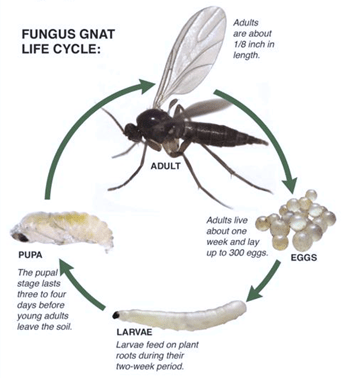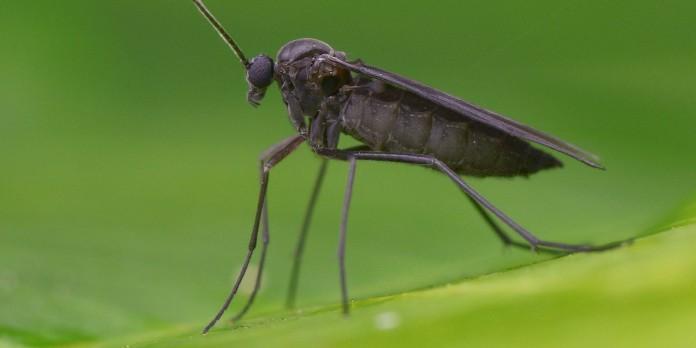By: Kathryn Redding, Garfield County Master Gardener
Many of us placed our indoor plants outside for the summer so they could enjoy natural light and rainwater. Now that October has arrived, it is time to drag them back inside for the winter months. Before doing so, be sure to hose down the entire plant with water to eliminate some unwanted pests. This is also a good time to repot your plants if needed.
Sounds fairly simple, right? Not so fast, because you most likely will experience an infestation of Fungus Gnats.
These tiny pests live in the soil feeding on fungus and decaying plant material. They frequently make their way indoors on potted plants or cut flowers. In homes, populations can quickly get out of hand. As a result, we soon notice them swarming around plants, windows, lights, and people. While Fungus Gnats are an annoyance, they are completely harmless to humans since they can not bite. However, they can be a problem for house plants as their larvae start to feed on tender plant roots. This can result in stunted growth, leaves yellowing, and in some cases the death of your plant.
Fungus Gnats are tiny, about the size of fruit flies. Their sizes range from 1/16 to ⅛ of an inch in length. Adults tend to spend most of their time on the soil surface of potted plants, but they may be seen flying around the outer edge of the pot or near drainage holes as well. Since they are not strong fliers, they tend to walk on top of the soil and fly about only in short bursts.

The gnats develop from egg to adult in 3 to 4 weeks. The short life cycle results in continual generations which can make eradication a challenge.
CONTROL AND PREVENTION
Instead of throwing your prized plant out, you can get rid of these annoying pests. Getting rid of Fungus Gnats is all about consistency. Here are a number of remedies to try:
- Watering: Do not overwater your plants. Gnats are attracted to moisture so let the soil dry out between waterings.
- Sticky card traps: These traps consist of a yellow notecard covered in a sticky adhesive. Gnats are attracted to the color yellow. Adult gnats will fly or crawl onto the card and become trapped.
- Cider-vinegar traps: Fill a shallow container with equal parts water and apple cider vinegar. Add a few drops of liquid dish soap into the mixture and stir gently. Place the trap inside the pot on top of the soil. Must be refreshed every few days.
- Hydrogen Peroxide: Mix a solution of 1 part of hydrogen peroxide with 4 parts of water. Water your houseplant with this solution when the top of the potting medium is dry. This will kill the larva.
- Cover drainage holes of the pot with fabric to prevent adult gnats from crawling in and out of pot.
- Summit Mosquito Bits: ContainsBacillus thuringiensis, subspecies: israelensis and is highly effective against larvae in potted plants. It will kill larvae for two days. It won’t kill egg-laying adults, so repeated applications are necessary.
***This method of eradicating Fungus Gnats has worked best for me. I simply scatter dried pellets on top of the soil and water the plant. I repeat every time I water until my problem is solved, and then I use it once a month as a preventive.
- Chemical measures. Sprays containing pyrethrins control adult Fungus Gnats. Because new adults emerge daily, repeat sprays every few days for at least two weeks to reduce populations.
Which method of control works best for you will depend on how serious the infestation: Sticky Cards, cider traps, and chemical sprays tend to work best on small infestations. If your problem is more serious, I suggest using hydrogen peroxide or Mosquito Bits to tackle the larvae.






























